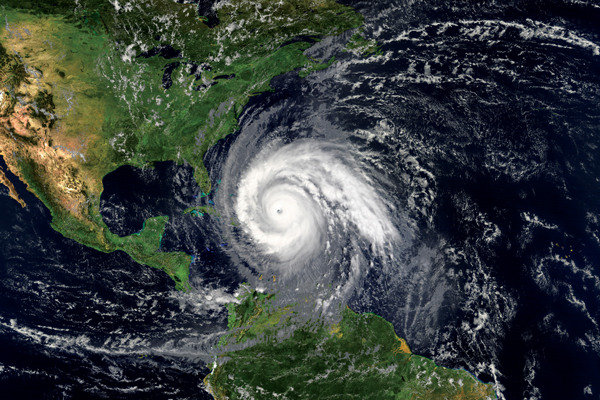
Late summer in my family brings a familiar list of “transition” discussions as we roll into the fall. We all reluctantly shift out of “vacation mode,” support the return to high school for the little one, note any business initiatives that launch right after Labor Day … and review Granny’s hurricane shelter.
You probably already talk about some of these things on our list, but you are increasingly likely to talk about the last one.
The Granny Hurricane Shelter discussion is our annual wrestle over what my now 85-year-old mother must do if a hurricane pounds her island in Southwest Florida (by the way, everyone calls my mother “Granny,” and she loves it). When Hurricane Dorian was recently ravaging the Bahamas, we were working on this in real time. It wasn’t our first rodeo. One week after my mother’s move to Florida in August 2004, Hurricane Charley blew right up her driveway but thankfully did very little damage to her home. The rest of the island was not so lucky—my condo nearby was leveled and the impressive canopy of large trees on the main road just disappeared. It was months before power and transportation returned to a new normal. Charley was the strongest storm to hit the area since 1960.
Subsequent years were pretty tame until 2017, when Hurricane Irma forced evacuations—and my mother, then 83, found herself in a shelter. Forecasts of a 15-foot storm surge caught residents by surprise, and the choices for shelter were very limited. The storm lasted only 48 hours, but a stuffy cinder block building with no air conditioning is not ideal for anyone for that long, especially not a senior citizen.
Older folks are especially at risk during storms and other disruptive events. According to one study, 40% of the more than 1,800 deaths attributed to Hurricane Katrina were people over the age of 70. A failed air conditioning system during Irma led to the deaths of 14 residents of a Florida nursing home. These were later ruled homicides and said to be caused by a negligent staff.
Floods during hurricanes sometimes challenge rescue workers to find and safely transport people unable to escape on their own. Even in my town on the Connecticut shoreline we have had three events in the past 10 years that kept power off and access restricted for nearly a week each time.
Pretty much any activity or event involving risk will be more dangerous for both the very young and the very old. Helping protect seniors is even more tricky since many are independent and determined to take care of themselves as they always have. The familiarity of home, even in a life-threatening storm, is not as intimidating as a municipal shelter filled with strangers. Many retirees have also likely moved away from their homes in search of better climates, leaving supportive family members thousands of miles away, a problem that is likely to get worse amid the waves of retiring baby boomers.
Further complicating the planning challenge is the aging itself. What worked for a spry 75-year-old may be impossible for the same person at 80.
As part of any good longevity plan, most clients and their families need dynamic solutions for the risks that grow more serious with age. One of the most common risks for aging clients, of course, is driving a car, yet it’s difficult for a stubborn older driver to give up this last vestige of independence, even though the choice creates risks for others. Florida is among the top five states for pedestrian fatalities and is home to eight of the 10 riskiest cities for pedestrians. Forty-two million people aged 65 or older have driver’s licenses.
Losing cherished aspects of lifestyle, hobbies and passions can be a disheartening process. Aging is said to be a continuing and depressing process of losing your abilities if you can’t redirect your energy. The loss of independence is the greatest fear of older people, and many need support to transition to safer activities. Look around your community and think of situations where a senior would be at more risk if they continued doing some things without monitoring. In my neighborhood, chain saws, motorboats, tractors and shotguns are commonplace. Twenty-five percent of Americans age 65 and over own a firearm. One of my neighbors, now 82, has several hunting rifles and shotguns. He was always a very careful and considerate hunter, but when he moved to an assisted living facility after the death of his wife, his weaponry was stored in an unsecured garage until a neighbor reminded the family of his stash. (Don’t get me started on the risks of unsecured firearms.)
I’ve often heard the excuse from family members after some avoidable accident or tragedy involving an older person with failing judgment that the person “always used to do that” or “is pretty careful.” Reduced “executive function”—including impulse control—is the reality of an aging brain. Seniors might make decisions based on inaccurate information or take completely different actions from the ones they took just months earlier.
And there are so many available risks present in the homes of retirees—cars, stairs, mobile phones, power tools. My mom has been hospitalized for accidents in her yard clearing brush. Many of the risks could be minimized if we took more care in watching our older family members and neighbors. It really takes a village.
I think of these proactive aging plans as “seatbelt” financial planning—plans that may not be needed but are there to prevent truly devastating results. Start with your family. Can your mom get to safety?
Steve Gresham is an industry executive, consultant and investor. He is chairman of Cogniscient, Inc., parent of Whealthcare Planning, LLC. See more at whealthcareplan.com.